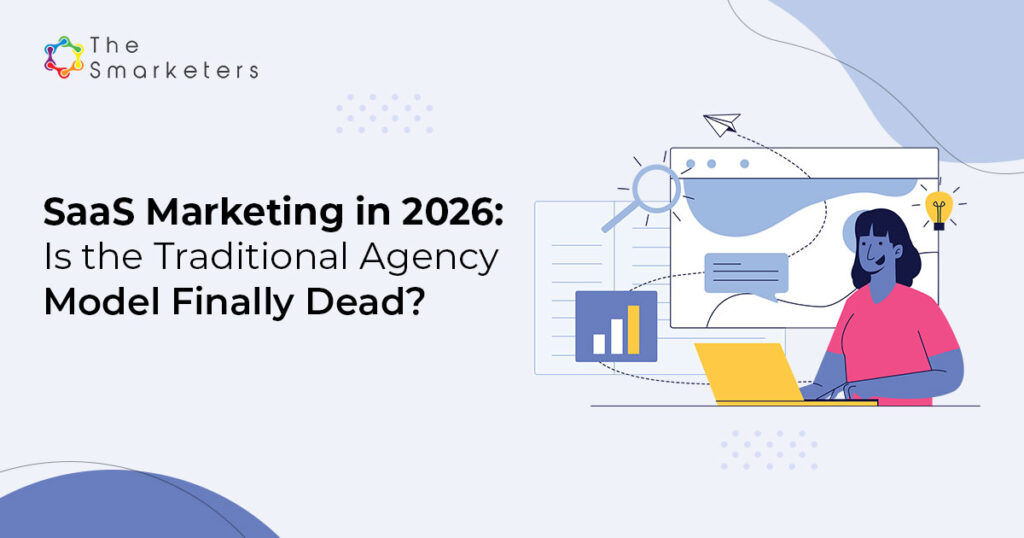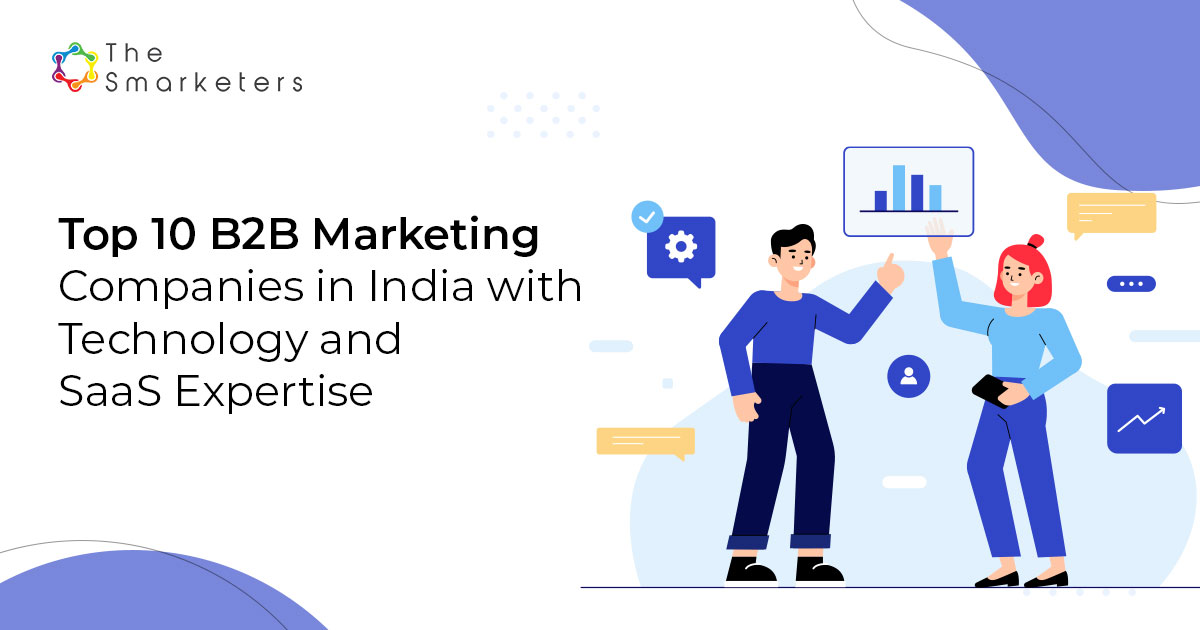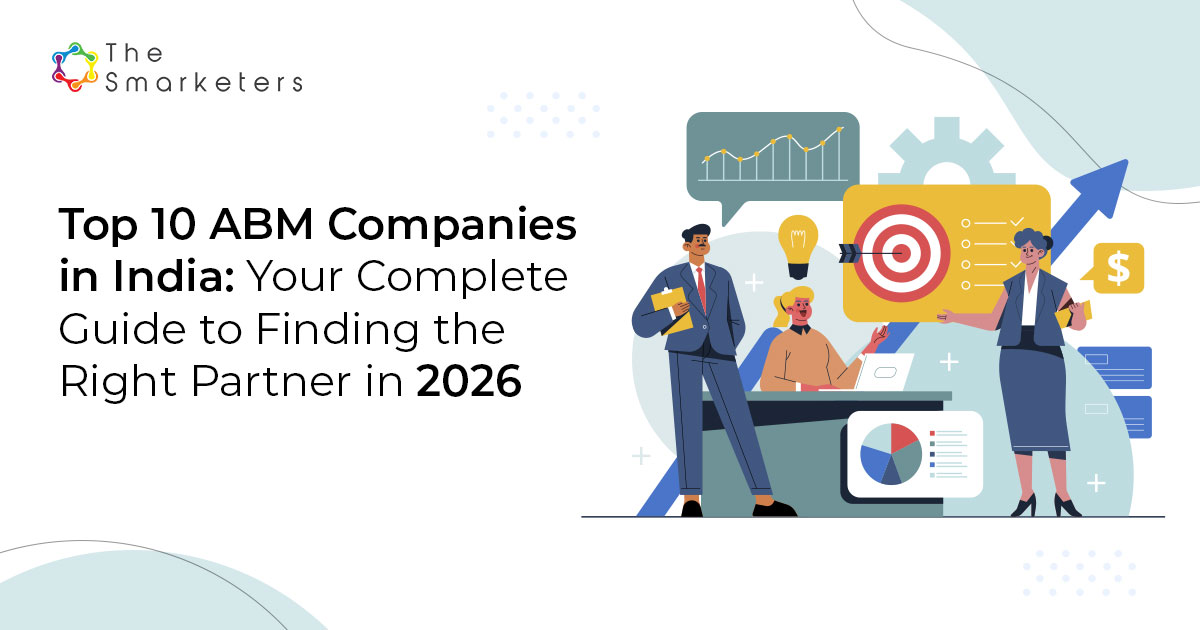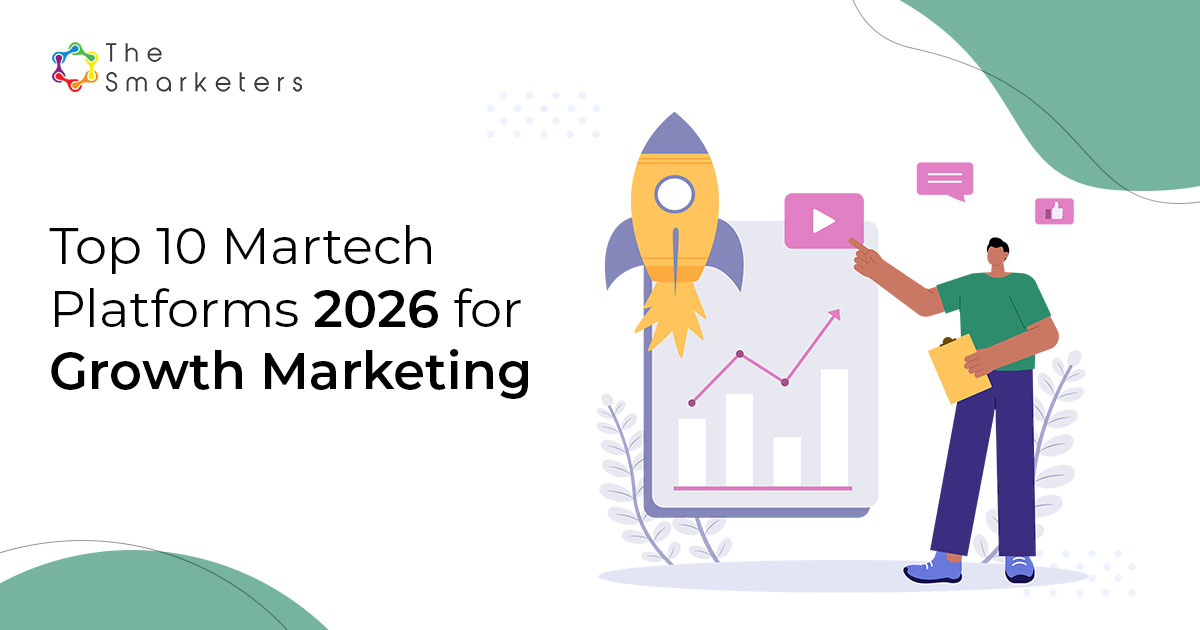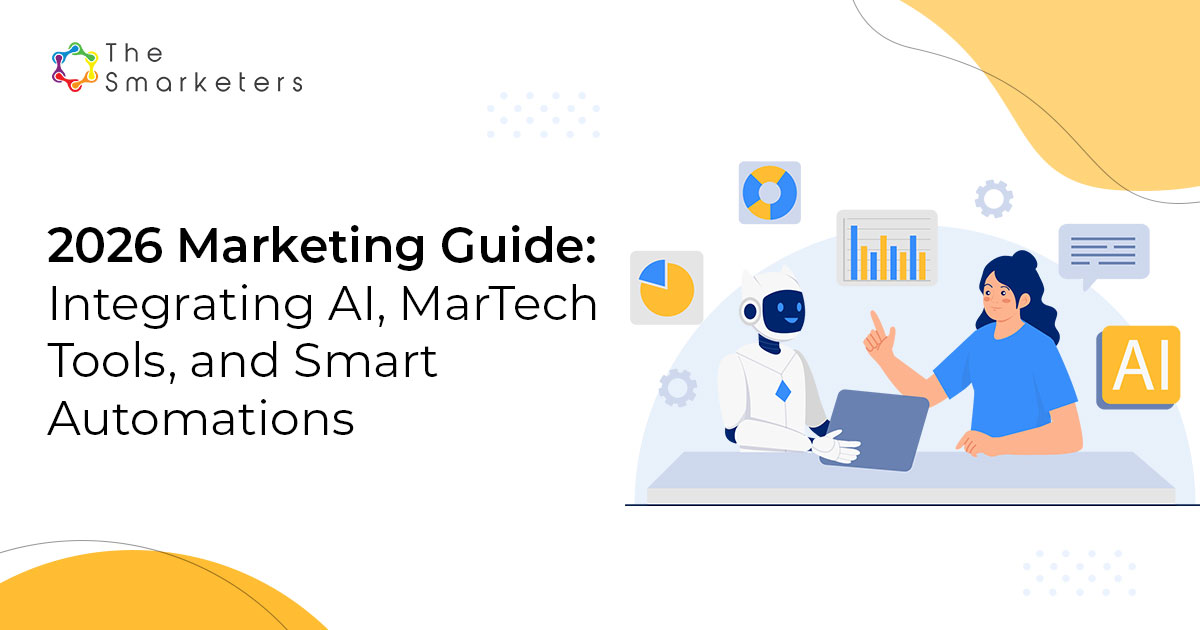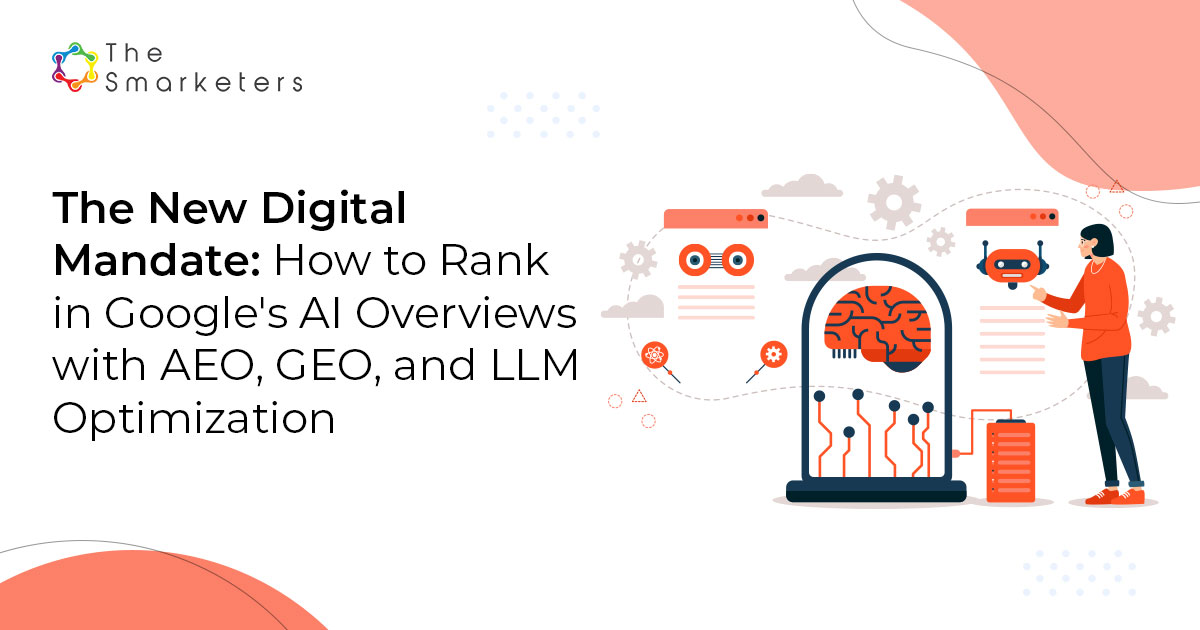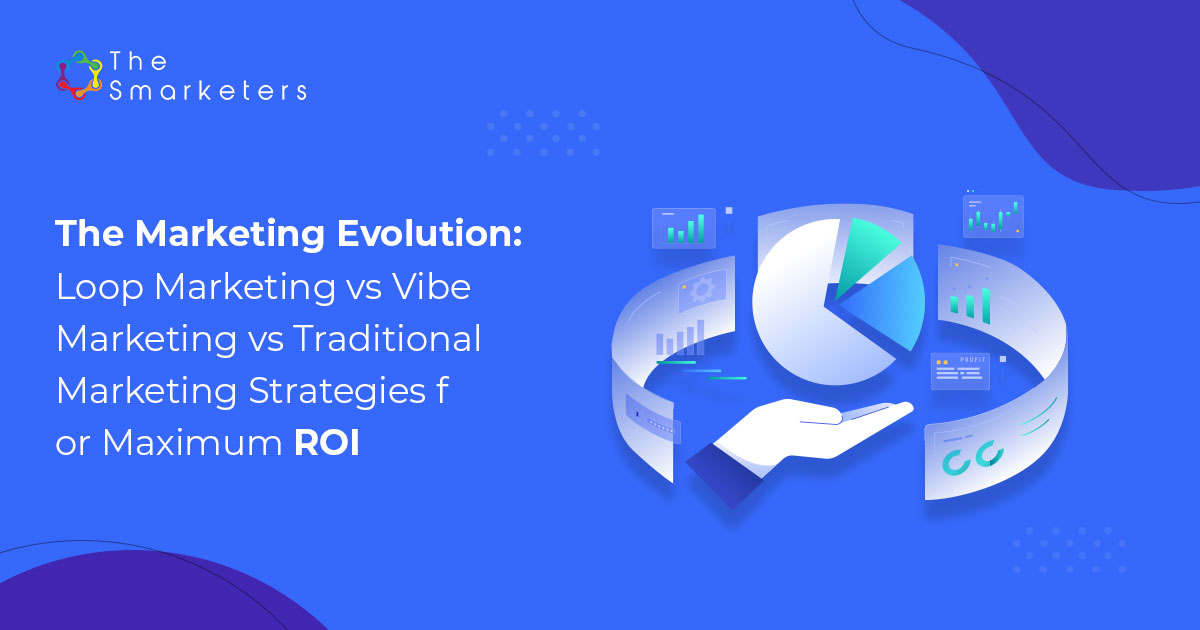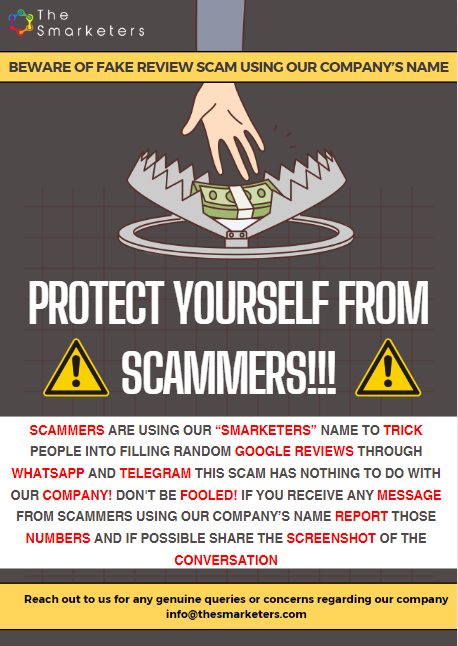Table of Contents
- Top 10 B2B Marketing Companies in India with Technology and SaaS Expertise
- Top 10 ABM Companies in India: Your Complete Guide to Finding the Right Partner in 2026
- Guide: How to find the right ABM agency for your organization?
- Account Based Marketing in 2025: All you need to know about ABM
- How To Implement ABM Personalization the Right Way
As we approach 2026, the Software-as-a-Service (SaaS) industry continues to reshape how businesses operate, scale, and compete. But while SaaS companies have revolutionized their own operational models, many are still clinging to outdated marketing approaches—particularly when it comes to agency partnerships. The question isn’t whether the traditional agency model will survive; it’s whether SaaS companies can afford to ignore its evolution.
The marketing landscape that SaaS companies navigate today bears little resemblance to the one that existed even five years ago. Customer acquisition costs are climbing, attribution models are becoming more complex, and the demand for specialized, data-driven marketing has never been higher. Yet many SaaS companies are still approaching agency relationships with the same playbook from 2015.
This seismic shift in how marketing services are procured and delivered isn’t just about agencies adapting—it’s about SaaS companies recognizing that their unique business models require equally unique marketing partnerships. Let’s examine how the agency landscape is transforming and what it means for SaaS marketing in 2026.
The Death of Traditional Agencies: Myth or Reality?
“The Death of the Agency Model” has been a recurring headline in marketing publications for years, but the reality is far more nuanced—especially for SaaS companies. The traditional agency model isn’t dying; it’s fragmenting and specializing at an unprecedented rate, creating both challenges and opportunities for SaaS marketers.
This transformation didn’t happen overnight. The agency ecosystem has undergone decades of evolution, shifting from a landscape dominated by comprehensive full-service providers to today’s highly specialized marketplace. What began as a clear division between traditional advertising and direct response marketing has morphed into an intricate web of niche specialists—each claiming expertise in increasingly granular areas like marketing automation, conversion optimization, and customer lifecycle management.
While this specialization has driven innovation, it has also created a coordination nightmare for marketing leaders who now find themselves juggling multiple agency relationships instead of managing a single strategic partnership.
For SaaS companies, this fragmentation has created a perfect storm. The complexity of SaaS sales cycles—from initial awareness through trial, conversion, onboarding, and expansion—requires expertise across multiple specialized areas. A SaaS company might need one agency for account-based marketing, another for conversion rate optimization, a third for customer success marketing, and yet another for product marketing. The result? Marketing teams are managing more vendor relationships than ever before, often without the procurement infrastructure to handle this complexity effectively.
The fragmentation isn’t necessarily problematic—it’s an evolution toward more precise, results-driven partnerships that align with the metrics-obsessed culture of SaaS businesses.
What’s particularly interesting for SaaS companies is that this specialization trend aligns perfectly with the industry’s own evolution toward vertical-specific solutions. Just as SaaS companies have found success by focusing on specific industries or use cases, agencies are discovering that understanding core SaaS metrics—CAC, LTV, churn, and expansion revenue—provides a significant competitive advantage.
The Evolution of Agencies to Technology Partners
Perhaps nowhere is the evolution of the agency model more evident than in the technology-first approach that has become table stakes for any agency hoping to serve SaaS clients effectively. Modern agencies don’t just provide services; they function as sophisticated technology brokers, bringing specialized tools and applications that many SaaS companies couldn’t access or implement on their own.
This shift is particularly relevant for SaaS companies because it mirrors their own business model evolution. Just as SaaS companies have moved from selling software to delivering outcomes, agencies are moving from selling hours to delivering technology-based capabilities.
For SaaS companies, this technology-broker role has become increasingly valuable. The martech landscape includes thousands of tools, many with overlapping features and complex integration requirements. Agencies that can navigate this landscape—bringing pre-negotiated contracts, proven implementation methodologies, and platform knowlegde—offer something that goes far beyond run-of-the-mill agency services.
However, this evolution also creates new challenges for SaaS procurement teams. The decision to hire an agency involves evaluating technology stacks, data integration methodologies, and long-term strategies. SaaS companies must now assess whether an agency’s technology partnerships align with their own tech stack and growth trajectory.
A Structural Shift: From Black Box to Transparent Partnership
The traditional agency structure—where account managers served as the primary client interface while creative teams operated behind closed doors—is becoming increasingly incompatible with SaaS business requirements. SaaS companies, built on principles of transparency, real-time data access, and iterative improvement, demand agency partnerships that mirror these values.
Historically, the agency model worked by allowing companies to outsource their entire marketing department while maintaining only a single relationship with their agency contact. But this black-box approach is no longer viable for SaaS companies that need granular visibility into campaign performance, immediate access to optimization opportunities, and the ability to make strategic pivots based on real-time data.
Forward-thinking companies are responding by investing in in-house marketing specialization while maintaining strategic partnerships with specialized agencies. Netflix exemplifies this approach with their creative team that produces everything from social media content to advertising campaigns, while still partnering with specialized agencies for specific market launches and other niche campaigns. Similarly, Spotify has built internal capabilities for data-driven personalization and content marketing while leveraging external partners for regional campaigns.
This hybrid model is particularly well-suited to SaaS companies, where the need for rapid iteration and continuous testing makes in-house capabilities essential, but the complexity of channels and tactics makes specialized agency partnerships valuable for more specialized business areas.
The rise of the gig economy is transforming how SaaS companies and agencies approach talent acquisition. As of 2025, the global gig workforce accounts for nearly 12% of the total labor market, with India’s gig labor force set to grow from 7.7 million in 2020-21 to 23.5 million by 2029-30. As a result, companies globally are increasingly managing hybrid teams that blend full-time employees, agency partners, and specialized freelancers—SaaS organizations included.
This evolution toward more flexible, transparent, and specialized partnerships isn’t just changing how agencies operate—it’s fundamentally reshaping what SaaS companies should expect from their marketing partnerships in 2026 and beyond.
SaaS Marketing Trends That Will Define 2026

Understanding the evolution of agency models is just the tip of the iceberg. As we look toward SaaS marketing in 2026, several transformative trends are reshaping how SaaS companies approach growth marketing, customer acquisition, and retention. These trends represent more than tactical shifts—they’re fundamental changes in how successful SaaS companies will compete and win in an increasingly sophisticated marketplace
- AI-Driven Marketing Automation: The Intelligence Revolution
AI in SaaS marketing will serve as the strategic backbone of every marketing operation, delivering hyper-personalized experiences that traditional agency approaches cannot match. Modern SaaS marketing strategies leverage AI’s ability to process customer data and deliver real-time insights, creating tailored experiences for each prospect based on industry, company size, and specific use case.AI SaaS marketing automation now extends across the entire customer journey, enabling companies to deliver precisely the right message at the optimal moment.
Key drivers of SaaS GTM strategies 2026 include :
- Predictive Customer Intelligence: AI systems identify potential churn risks weeks in advance, enabling proactive SaaS customer success marketing interventions through behavioral pattern analysis and usage metrics.
- Dynamic Content Optimization: Real-time personalization that automatically adjusts messaging, pricing, and feature highlights based on individual prospect characteristics, making SaaS content marketing more effective than traditional A/B testing.
- Intelligent Lead Scoring: Machine learning algorithms evaluate lead quality across multiple dimensions, ensuring sales teams focus on the highest-value opportunities while AI handles complex analysis.
The evolution of SaaS marketing toward AI-driven approaches isn’t about replacing human insight—it’s about amplifying human capability with machine intelligence to create richer, hyper-personalized marketing experiences.
- Video-First Content Strategy: The Engagement Amplifier
Video content is revolutionizing how SaaS companies communicate value, with visitors spending more time on pages featuring video. SaaS marketing trends 2026 point toward video becoming the primary medium for explaining complex solutions and nurturing customer relationships, addressing the core challenge of making intangible software solutions tangible for B2B buyers.Digital marketing for SaaS companies now leverages video across strategic applications: sophisticated product demos that connect features to business outcomes, video-based customer success stories that create emotional connections, and educational series that build thought leadership and trust.
Interactive video experiences are central to SaaS demand generation 2026 strategies, allowing prospects to explore features, customize scenarios, and experience value firsthand. This transforms traditional product marketing into immersive experiences that accelerate sales cycles.
Growth marketing for SaaS requires comprehensive video ecosystems – explainer videos for different buyer personas, onboarding sequences for new customers, and educational content that drives product adoption and expansion. This systematic approach to SaaS content marketing 2026 serves strategic business objectives beyond engagement metrics.
Live video interactions through webinars, demos, and Q&A sessions are essential for SaaS account-based marketing (ABM), enabling immediate feedback and personalized demonstrations that traditional approaches cannot replicate.
- Interactive Content Experiences: Beyond Static Engagement
In an era of shrinking attention spans, SaaS marketing strategies must evolve beyond traditional content formats to capture and maintain prospect interest. Interactive content has emerged as a critical differentiator in SaaS demand generation 2026, transforming passive readers into active participants while generating valuable behavioral data that informs future marketing decisions.The shift toward interactive experiences addresses a fundamental challenge in B2B SaaS marketing strategy: making complex, technical solutions accessible and engaging for busy decision-makers. Interactive tools, calculators, assessments, and configurators allow prospects to experience value before making purchase decisions, significantly accelerating the sales process.
Leading SaaS companies are implementing interactive content ecosystems that serve multiple strategic objectives :
- ROI Calculators: Help prospects quantify potential value and justify investment decisions
- Interactive Product Demos: Allow hands-on exploration of features
- Assessment Tools: Provide personalized recommendations while capturing lead qualification data
- Configuration Tools: Enable prospects to customize solutions for their specific needs
This digital marketing approach transforms content from information delivery into value-driven experiences.
The data generated by interactive content provides valuable insights that feed directly into data-driven SaaS marketing strategies :
- More precise targeting based on engagement patterns
- Personalized follow-up campaigns triggered by specific interactions
- Improved product-market fit understanding through user preferences
- Enhanced lead scoring based on demonstrated interest levels
Mobile optimization has become critical for interactive content success, with significant portions of B2B research now conducted on mobile devices. SaaS content marketing 2026 requires seamless cross-device experiences that maintain functionality and engagement across devices and channels.
- Strategic Thought Leadership: Authority Through Original Insights
Thought leadership in SaaS marketing has evolved far beyond generic industry commentary to become a strategic differentiator that drives growth marketing for SaaS companies. The most successful SaaS marketing trends 2026 center on original research, proprietary data insights, and expert perspectives that position companies as authoritative voices in their specific domains.Modern thought leadership requires substantive, research-backed content that addresses specific challenges. Effective SaaS thought leadership focuses on :
- Role-Specific Insights: Content tailored to CTOs, CMOs, or other key decision-makers
- Data-Driven Analysis: Original research that reveals market trends and opportunities
- Vertical-Specific Solutions: Industry-focused perspectives and recommendations
- Technical Expertise: Deep dives into implementation strategies and best practices
The integration of internal subject matter experts has become essential for authentic thought leadership that resonates with technical buyers. Original research and proprietary insights serve dual purposes, creating significant competitive advantages :
- Credibility Building: Establishes authority through unique data and insights
- Organic Traffic: Research-backed content ranks higher in search results
- Earned Media: Industry publications frequently cite original research
Social media channels, particularly LinkedIn, have become essential distribution channels for thought leadership content. The conversational nature of social media allows SaaS leaders to engage directly with prospects, participate in industry discussions, and build personal brands that enhance company credibility. This approach to SaaS account-based marketing (ABM) creates multiple touchpoints and relationship-building opportunities throughout the sales process.
The most effective thought leadership strategies in SaaS marketing combine compelling content with strategic distribution, leveraging both organic social engagement and paid promotion to maximize reach among target audiences. This integrated approach requires close collaboration between content creation, social media management, and demand generation—another area where in-house teams often outperform traditional agency structures.
- Account-Based Marketing: Precision Over Volume
SaaS marketing in 2026 demands surgical precision in targeting high-value accounts rather than broad-based acquisition strategies. SaaS account-based marketing (ABM) has evolved from an enterprise-only approach to a fundamental factor driving growth marketing for SaaS companies operating in competitive markets with rising customer acquisition costs.Strategic ABM plans enable SaaS companies to directly connect revenue outcomes to specific account engagement, solving critical attribution challenges that have plagued B2B SaaS marketing strategy for years. This precision-focused approach transforms how companies measure success, shifting from vanity metrics to revenue-driving indicators that demonstrate clear ROI.
Key performance indicators driving SaaS ABM success in 2026 include :
- Deal Velocity: Time from initial engagement to closed-won, measured by account tier
- Account Penetration: Percentage of key stakeholders engaged within target accounts
- Pipeline Quality: Average deal size and conversion rates from ABM campaigns
Multi-touch Attribution: Revenue impact across multiple touchpoints and channels
The integration of AI in SaaS marketing with ABM strategies creates unprecedented targeting opportunities. Machine learning algorithms analyze firmographic data, technographic signals, and behavioral patterns to identify accounts showing buying intent, enabling proactive engagement before competitors recognize opportunities.
ABM’s evolution toward data-driven SaaS marketing represents a fundamental shift from lead generation to account generation, where every marketing dollar is invested in prospects with demonstrated potential for significant revenue impact.
Successful SaaS digital transformation marketing through ABM requires sophisticated orchestration across sales, marketing, and customer success teams. This approach aligns messaging, timing, and resource allocation around specific account needs, creating personalized experiences that accelerate decision-making processes and reduce sales cycle friction.
- Omnichannel Integration: The Unified Customer Experience
The fragmented approach to SaaS demand generation in 2026 is giving way to sophisticated omnichannel strategies that create seamless customer experiences across every touchpoint. Modern SaaS marketing strategies recognize that prospects engage through multiple channels simultaneously, requiring unified messaging and consistent value propositions regardless of the interaction point.The evolution toward omnichannel marketing reflects changing buyer behavior in B2B SaaS purchases. Decision-makers research solutions across various platforms—reading industry publications, engaging with social content, attending webinars, and evaluating peer reviews—before entering formal sales processes. SaaS companies must maintain presence and consistency across all these touchpoints.
Strategic omnichannel implementation encompasses multiple synchronized channels :
- Content Marketing Ecosystem: Blog posts, whitepapers, and case studies optimized for search and social distribution
- Social Engagement: LinkedIn thought leadership, Twitter industry discussions, and community participation
- Email Automation: Personalized nurture sequences triggered by specific behavioral patterns
Paid Media Integration: Synchronized messaging across search, social, and display advertising
- Direct Outreach: Sales development activities aligned with marketing touchpoints
The technical complexity of true omnichannel execution requires advanced martech stacks, data integration capabilities, and real-time optimization based on cross-channel performance metrics. In addition, the integration of AI-powered personalization across channels enables dynamic content adaptation based on prospect behavior, channel preferences, and engagement history. This level of personalization often favors internal teams with extensive product knowledge over traditional agency relationships.
Attribution modeling becomes critical in omnichannel SaaS content marketing in 2026, as companies must understand how different channels contribute to customer acquisition and expansion. Advanced attribution models track customer journeys across multiple touchpoints, providing insights that inform budget allocation and channel optimization decisions.
Omnichannel success in SaaS marketing requires more than channel proliferation—it demands strategic orchestration that creates cohesive customer experiences while driving channel-specific optimization.
- Native Advertising: Building Authority Without Disruption
Did you know that native advertising can increase purchase intent by 18% and boost brand affinity by 9% compared to banner ads?Also, native ads are viewed 53% more frequently than traditional display formats, indicating significantly higher engagement levels.
For B2B SaaS marketing strategy, native advertising addresses ad fatigue among executives by seamlessly integrating promotional content within editorial flows, creating opportunities to demonstrate thought leadership and build trust without disruption.Strategic native advertising implementation for SaaS companies requires a deep understanding of content and audience behavior :
- Journey-Aligned Messaging: Content tailored to specific buyer journey stages, from awareness-building thought leadership to consideration-stage solution comparisons
- Platform-native Content: Editorial style and tone that matches the host publication’s voice while maintaining brand authenticity
- Value-first Approach: Educational content that provides genuine insights rather than promotional messaging
- Performance Analytics: Continuous monitoring of engagement metrics, conversion paths, and revenue attribution
The technical sophistication required for effective native campaigns—audience segmentation, content optimization, and attribution—favors SaaS companies with in-house capabilities over traditional agencies, especially for SaaS content marketing 2026, where product knowledge and rapid iteration create competitive advantages.
Native advertising success in SaaS marketing depends on creating content that genuinely serves the audience’s information needs while subtly demonstrating the solution’s value.
AI-powered personalization now optimizes native content in real-time based on reader behavior and conversion likelihood, creating dynamic experiences that traditional advertising cannot match—another area where AI in SaaS marketing provides competitive advantages for companies mastering these technologies.
- Product-Led Growth Through Strategic Freemium Models
The evolution toward product-led growth (PLG) SaaS strategies has made freemium models a cornerstone of SaaS marketing in 2026. Rather than viewing freemium as a revenue sacrifice, leading SaaS companies recognize it as a sophisticated acquisition and conversion strategy that aligns with modern buyer preferences for risk-free evaluation and self-service adoption.The strategic implementation of freemium models addresses fundamental shifts in B2B SaaS marketing strategy. Decision-makers increasingly expect to experience value before committing to purchases, particularly as software adoption becomes more democratized across organizations. Freemium models enable prospects to validate solution fit, demonstrate ROI to stakeholders, and build internal advocacy before formal procurement processes begin.
Effective freemium strategies in SaaS marketing in 2026 serve multiple strategic objectives :
- Market Penetration: Lower barriers to adoption enable faster user base growth and market share expansionProduct Validation: User behavior data informs product development and feature prioritization decisionsCompetitive Defense: Freemium offerings neutralize competitor advantages and create switching costsNetwork Effects: User growth creates value that attracts additional users and enterprise accounts
- Product Validation: User behavior data informs product development and feature prioritization decisions
- Competitive Defense: Freemium offerings neutralize competitor advantages and create switching costs
- Network Effects: User growth creates value that attracts additional users and enterprise accounts
The Verdict : Evolution, Not Death

Software engineers use neural networks modeled after human brain to solve complex problems. IT experts in high tech workspace using artificial intelligence to look at data
Today, what we’re witnessing isn’t the death of agencies, but their fundamental transformation in response to the sophisticated demands of SaaS marketing in 2026. The companies that will thrive are those that recognize this evolution and plan their marketing partnerships accordingly.
The trends we’ve explored—from AI-powered personalization to strategic freemium models—all point toward marketing approaches that require intimate understanding of SaaS business models, customer success metrics, and product-led growth principles. These aren’t isolated tactics—they represent a comprehensive approach to growth marketing for SaaS companies.
Maintaining such a vast array of specialized offerings and solutions across multiple clients can become quite challenging for traditional agencies, thus, creating natural advantages for companies that invest in building in-house potential.
The evidence throughout this analysis points to a clear conclusion: the most successful SaaS marketing strategies 2026 will increasingly favor hybrid models that combine internal capabilities with external partners for niche business areas. The traditional agency vs SaaS model debate isn’t about choosing sides—it’s about building the right combination of organizational strengths and external partnerships that align with business-specific growth objectives and requirements.
Ready to Transform Your SaaS Marketing Strategy?
Navigating the evolution of SaaS marketing requires more than understanding trends—it demands strategic implementation that aligns with your specific business objectives and growth stage. Whether you’re building internal marketing capabilities, optimizing existing agency relationships, or exploring hybrid approaches, the right strategic guidance can accelerate your path to sustainable growth.
At The Smarketers, we specialize in helping SaaS companies navigate exactly these challenges. Our team combines deep SaaS industry expertise with proven experience in AI-driven marketing automation, product-led growth strategies, and sophisticated demand generation programs.
Our approach aligns with the hybrid model trends discussed throughout this analysis. We work as an extension of your team, providing customized solutions while ensuring you maintain control over core customer experiences and strategic decision-making. From AI-powered personalization implementation to comprehensive ABM strategies, we help SaaS companies build sustainable competitive advantages through data-driven marketing excellence.
Ready to discuss how these SaaS marketing trends apply to your specific growth challenges? Get in touch with us today to explore how we can help you navigate the evolution toward more sophisticated, data-driven growth strategies that drive sustainable results in 2026 and beyond.
Frequently Asked Questions (FAQs)
1. What role does AI play in the future of SaaS marketing?
AI-driven marketing automation enables SaaS companies to create hyper-personalized customer experiences by analyzing vast amounts of data in real-time. Predictive customer intelligence allows companies to identify churn risks, optimize content in real time, and intelligently score leads, ensuring sales teams focus on the highest-value prospects. These capabilities transform how SaaS companies drive customer acquisition and retention, providing more efficient and scalable marketing solutions.
2. Why is the demand for specialized agencies increasing in the SaaS marketing landscape, and what does this mean for the future of agency relationships?
As SaaS companies scale, the complexity of their sales cycles and customer journeys—spanning acquisition, trial, conversion, and expansion—requires expertise in distinct areas such as account-based marketing (ABM), customer success, conversion optimization, and product marketing. This growing need for specialized knowledge and measurable results is driving SaaS companies to seek out agencies with deep domain expertise. The future of agency relationships will likely be fragmented into smaller, more niche partnerships.
3. What does the rise of hybrid marketing teams—combining in-house expertise with external agency support—mean for SaaS companies in 2026?
Hybrid marketing teams enable SaaS companies to leverage the flexibility and speed of in-house capabilities while benefiting from specialized external agency expertise. This model fosters a balance between operational control and access to niche skills, ensuring that companies can iterate and optimize their marketing efforts quickly without losing sight of strategic objectives. For SaaS companies in 2026, the hybrid model will be essential for staying agile and competitive in an increasingly complex marketing environment.
4. How do I know when my SaaS company should shift from traditional agency relationships to a hybrid marketing model?
The shift becomes necessary when you’re experiencing coordination challenges across multiple specialized agencies, struggling with attribution across complex customer journeys, or needing rapid iteration capabilities that external partners can’t match. Key indicators include: your customer acquisition costs rising due to agency coordination inefficiencies, difficulty accessing real-time campaign data for optimization, or requiring deep product knowledge for effective marketing that agencies struggle to maintain across multiple clients.
5. What’s the biggest mistake SaaS companies make when transitioning from lead generation to account-based marketing in 2026?
The biggest mistake is treating ABM as a tactical shift rather than a strategic transformation. Companies often fail to align sales, marketing, and customer success teams around account-centric metrics, continue measuring success through traditional lead volume metrics instead of account penetration and deal velocity, or implement ABM technology without developing the internal coordination capabilities required for effective account orchestration. Success requires fundamental changes in team structure, measurement frameworks, and resource allocation—not just new tools.
6. Omnichannel Integration: The Unified Customer Experience
Prioritize trends based on three criteria: alignment with your current customer journey complexity, internal capability development potential, and competitive differentiation opportunity. Start with trends that leverage existing strengths—if you have strong product expertise, prioritize product-led growth and interactive content. If you have advanced data capabilities, focus on AI-driven personalization and sophisticated attribution. Avoid trends that require capabilities you cannot develop internally or that don’t address your specific customer acquisition challenges. The framework should sequence implementations to build capabilities progressively rather than attempting comprehensive transformation simultaneously.
7. How can small to mid-size businesses get started with ABM AI integration on a limited budget?
SMBs can begin their ABM AI journey with cost-effective, high-impact initiatives. Start with free or low-cost AI tools for content personalization and account research—many platforms offer basic AI capabilities at accessible price points. Focus on one specific use case, such as email personalization or social media research, to prove value before expanding.
The key is to leverage existing tools with AI capabilities rather than investing in entirely new platforms. Many CRM and marketing automation systems now include AI features that can provide immediate value. Additionally, consider partnering with specialized agencies like The Smarketers, who can provide expertise and implementation support without the need for internal AI specialists, making advanced ABM AI capabilities accessible regardless of company size.

